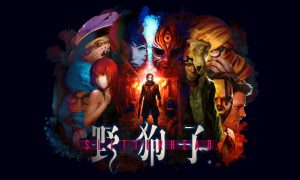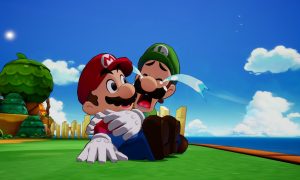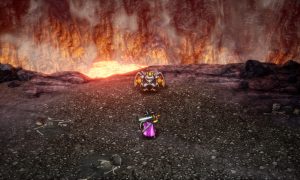Sakura Wars (or Sakura Taisen) has been around for a number of years, through five different games, a movie, anime series and quite a bit of merchandise. It’s high on the list of Japanese series that hardcore fans of import games have wanted to get brought to the US (followed very closely by Tokimeki Memorial). When NIS America announced that they were bringing the series to the US, reaction was mixed. While people were ecstatic to see Sakura Wars in the US, the news that it was Sakura Wars 5 with the title Sakura Wars: So Long, My Love (released in 2005) and not the original game was less appealing to some.
Two weeks ago we reviewed the PS2 version of the game, giving it a respectable score of 80. Let’s take a look at the Wii version to see if you should pick this one up on the Wii or the PS2.
So Long My Love, Hello Anime Style Story
The story of Sakura Wars: So Long, My Love is set in an alternate universe in 1928, where instead of the Industrial Revolution, you have the Steam Revolution, and most industry is steam-powered. Young Shinjiro Taiga (the nephew of the original game’s main character) is summoned to Tokyo to join the Tokyo Combat Review, only to be told that he’s being sent to New York instead. Once he arrives there (and immediately gets into trouble and nearly arrested), it turns out that no one really wanted him, they wanted his uncle, and are ready to ship him right back home. The game’s story involves Shinjiro gaining acceptance and growing to lead the New York Combat Review to defend the city against their enemies, while also building relationships with the other members of the team.
That’s right: building relationships. Sakura Wars: So Long, My Love is more about character interaction and story rather than combat with steam-powered mecha. In fact, a solid sixty to seventy percent of the game’s ‘action’ is talking to the other (almost exclusively-female) cast, performing various tasks with the game’s LIPS (Live & Interactive Picture System) to build your relationships with the other members of the Revue, which directly translates to increased performance in battle.
Like many anime series (and a few games, such as Disgaea before it), Sakura Wars: So Long, My Love is set up in chapters. Each chapter has its own small story, and the majority of each chapter is spent following the plotline with various prompts to use your analog sticks with the LIPS system in response to what’s going on in the game, such as making various dialogue choices, looking at locations or characters (including ‘naughty’ bits from time to time) until it is time for the enemy to attack. There is no real way to lose the game during these segments; poor performance will only lower the other cast members’ feelings towards you which can limit combat effectiveness.
Each chapter then cumulates in one (usually multi-stage) turn-based strategic combat session, as you fight off the Big Bad of the stage. During the combat stages, you control all of the characters, each of whom has separate introductions and special combat animations, which are very typically anime-like. Once the battle is done, you get an epilogue for the chapter, and then it’s time for the next.
The game paces itself very nicely, with each chapter broken up into four to six chunks each with a save point at the end. Not only that, you can choose to suspend your gameplay and go back to the title screen if you need to leave at any particular point, and then pick up from where you left off during the next play (or simply choose one of the other save points).
PS2 vs. Wii Graphics
Graphically, there is not much of a difference between the Wii and PS2 versions. Both have a mixture of 2D animation and 3D rendering during combat and while travelling the game world. Most of the game is done with 2D anime-style portraits which change poses depending on the story, interspersed with actual animation cutscenes. There are also clips of animation within the combat, notably the special attacks. The one benefit each version may receive depends on your TV setup. The Wii version runs in progressive scan which helps the graphics a little bit, but the PS2 version will run in 1080p if you have a PS3 capable of playing PS2 games and a TV that will display 1080p. If you only have a Wii and a PS2 then the Wii version is definitely prettier since the PS2 hardware will not allow you to run the game in 480p or widescreen.
Sayonara Japanese Voice Cast
One major difference between the PS2 and Wii versions of the game is that the PS2 version has both Japanese and English language-discs, while the Wii version is English-only. This is a very distinctive difference to note, specifically because of the varying quality of the English voice acting. The voice-acting ranges from the solid and passable (Sunnyside, Chieron and Subaru mainly) to average (Shinjiro and Rosita) to …. really, really bad (Gemini). Anyone who is from the south knows that there is a huge difference between a Southern accent and a Texan one. Gemini, who is supposed to be Texan, has an accent that would put Paula Deen to shame and is the best reason for turning voices off, or at least switching to the Japanese disc. So if Japanese voices are a must for you then avoid the Wii version and pick up the PS2 one.
Honestly, though, outside of that there’s really not much issue with the localization. They changed the name of the theater from “Little Lip” to “Littlelip”, even though it’s obviously two separate words in the game, and changed a couple of character names completely. Admittedly, one change that drove me nuts was how they pronounce Gemini’s name. In English, they’re using the Japanese pronunciation, which makes it sound like it should be spelled “Gemiknee”. This is more of an annoyance than anything else, to be truthful.
The music in the game is quite good, although it’s highly repetitive. You’ll hear the same snippets of music over and over again, both in combat and while in Adventure Mode. It tends to blend into the background, however, so is not as intrusive as it otherwise might have been. Still, it’s another mark against the game as a whole.
No Waggle In This Play
The controls are fairly simple. With the Wii version you have the choice of either using the Wii-mote and the nun-chuck or the classic controller. Most of your commands are kept on-screen for easy reference as well. As the game is not twitch-based other than the LIPS system (and then only somewhat), the controls are kept very simple and easy to keep track of. The use of motion controls are limited to a couple of point and click exploration moments and don
Sakura Wars: So Long, My Love clocks in at around twenty-five to thirty hours for a standard playthrough. This is extended, however, by the fact that the game has seven endings (one for each of the main female characters and a standard one), some of which may require complete playthroughs to achieve. Also, once the game is saved at any point, you can go into Free & Easy Day in NY mode, which allows you to view pictures and movies that you’ve unlocked, enter codes (the US version has different codes than the Japanese version did, NIS has stated that they’d release these later), take photographs and other features.
Value?
The Wii version is a little bit less of a value than the PS2 game, as the PS2 version comes in both English and Japanese languages, includes an artbook and poster, and runs you $40. Whereas, the Wii version comes with the standard game, English only voice actors, and none of the extras. Admittedly, this is a different game than most people would expect, with a majority of the game consisting of watching the story with some dating-sim elements. However, Sakura Wars: So Long, My Love definitely is worth the effort of picking it up, and may convince NISA to port the earlier games over, perhaps on the PSP.
Ron Burke is the Editor in Chief for Gaming Trend. Currently living in Fort Worth, Texas, Ron is an old-school gamer who enjoys CRPGs, action/adventure, platformers, music games, and has recently gotten into tabletop gaming.
Ron is also a fourth degree black belt, with a Master's rank in Matsumura Seito Shōrin-ryū, Moo Duk Kwan Tang Soo Do, Universal Tang Soo Do Alliance, and International Tang Soo Do Federation. He also holds ranks in several other styles in his search to be a well-rounded fighter.
Ron has been married to Gaming Trend Editor, Laura Burke, for 28 years. They have three dogs - Pazuzu (Irish Terrier), Atë, and Calliope (both Australian Kelpie/Pit Bull mixes), and an Axolotl named Dagon!

See below for our list of partners and affiliates:
























